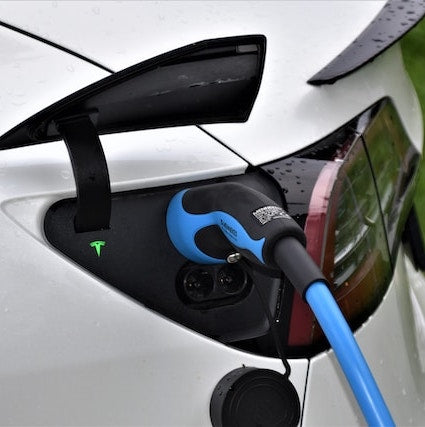So verlängern Sie die Batterielebensdauer Ihres Tesla

Um die Lebensdauer der Batterie Ihres Tesla zu erhalten und zu verlängern, ist mehr als nur verantwortungsvolles Laden erforderlich. Es beinhaltet auch das Verständnis der Wissenschaft hinter der Lithium-Ionen-Technologie, Ihres Fahrverhaltens und des Einflusses von Umweltfaktoren.
🔋 Auspacken der Lithium-Ionen-Batterien von Tesla
Die Lithium-Ionen-Batterien von Tesla bestehen aus Tausenden einzelner Zellen und arbeiten gemeinsam daran, Ihr Fahrzeug anzutreiben. Jede Zelle enthält eine Kathode, eine Anode und einen Elektrolyten, der die Bewegung der Lithiumionen ermöglicht. Im Laufe der Zeit Durch wiederholte Lade- und Entladezyklen kommt es zu physikalischen Veränderungen in den Zellen, die sich auf die Batterie auswirken können Leistung und Leben.

Laden: Der Kern der Batteriegesundheit
-
Vermeiden Sie eine vollständige Aufladung: Lithium-Ionen-Akkus bevorzugen eine teilweise Aufladung gegenüber einer vollständigen Aufladung. Häufiges vollständiges Laden kann den Akku belasten, was zu Lithium-Plating und beschleunigtem Abbau. Behalten tägliches Aufladen zwischen 20 % und 80 %, wodurch bei langen Fahrten 100 % Ladung gespart werden.
-
Smart Supercharging: Supercharging ist vorteilhaft für die Geschwindigkeit, aber häufige Nutzung kann induzieren mehr Hitze und eine stärkere Degradation. Reservieren Sie Supercharging für notwendige Szenarien und verlassen Sie sich mehr auf Stufe 2 Laden zu Hause.
-
Batteriekalibrierung: Lassen Sie Ihre Batterie etwa einmal im Jahr auf etwa 10 %, dann laden Sie es wieder auf 90% auf. Dieser Prozess hilft dem Batteriemanagementsystem (BMS) genau berechnen Reichweite und Kapazität.

Der Einfluss der Temperatur
-
Vorkonditionierung: Die Vorkonditionierung wärmt die Batterie vor der Fahrt auf, insbesondere bei kaltem Wetter vorteilhaft. Es verbessert die Effizienz und reduziert die Batteriebelastung, sollte aber durchgeführt werden, während das Fahrzeug ist noch angeschlossen.
-
Kühl halten: Länger andauernde Einwirkung hoher Temperaturen kann zu schnellerer chemischer Reaktionen innerhalb der Zellen, die den Abbau beschleunigen. Parken Sie in schattigen Bereichen oder verwenden Sie Teslas „Cabin Overheat Schutzfunktion bei extremer Hitze.
-
Vermeidung von Kältestress: Kaltes Wetter erhöht den Innenwiderstand der Batterie und verringert seine Kapazität. Lagern Sie Ihren Tesla bei extremen Temperaturen möglichst in einer temperaturkontrollierten Umgebung. kalt.

Fahr- und Lagerungspraktiken
-
Regeneratives Bremsen: Die Nutzung der regenerativen Bremsen reduziert den Verschleiß der mechanische Bremsen und speist Energie in die Batterie ein. Diese Funktion ist im Stadtverkehr am effizientesten und weniger bei Autobahngeschwindigkeiten.
-
Längere Lagerung: Wenn Sie Ihren Tesla für längere Zeit lagern, halten Sie den Ladestand bei etwa 50 %. Stellen Sie außerdem sicher, dass es nach Möglichkeit an ein Ladegerät angeschlossen ist, um den „Vampir-Abfluss“ auszugleichen.
-
Effizientes Fahren: Aggressives Fahren und hohe Geschwindigkeiten können zu erhöhtem Energieverbrauch führen und mehr Wärmeentwicklung, die die Batterie belasten kann. Fahren mit mäßiger Geschwindigkeit und allmählicher Beschleunigung kann den Batteriezustand mit der Zeit verbessern.

Regelmäßige Wartung und Updates
-
Batteriekühlmittel: Das Kühlmittel hält die Batterie während des Betriebs auf optimaler Temperatur. Überprüfen Sie den Kühlmittelstand regelmäßig und füllen Sie ihn bei Bedarf in einem Tesla Service Center nach.
-
Software-Updates: Halten Sie die Software Ihres Tesla auf dem neuesten Stand, um sicherzustellen, dass Sie von den neuesten Energiesparalgorithmen und Firmware-Optimierungen, die von Tesla-Ingenieuren entwickelt wurden.
-
Physische Wartung: Überprüfen Sie die Batterie und ihre Komponenten regelmäßig auf physische Schäden oder Unregelmäßigkeiten. Eine frühzeitige Erkennung potenzieller Probleme kann dazu beitragen, die Batterielebensdauer zu verlängern.
🪫 Batterieverschleiß verstehen
Die Verschlechterung der Batterie ist ein natürlicher und unvermeidlicher Prozess, der alle Batterien im Laufe der Zeit betrifft, auch die gebrauchten in Tesla-Fahrzeugen. Lithium-Ionen-Batterien, wie sie in Teslas verbaut sind, verlieren mit jedem Laden und Entladen an Leistung Zyklus, aber die Geschwindigkeit dieses Abbaus kann durch mehrere Faktoren beeinflusst werden.
Lade- und Entladezyklen
Als Zyklus bezeichnet man den Vorgang des Ladens einer Batterie von 0 % auf 100 % und dann wieder auf 0 % entladen. Die meisten täglichen Fahrten stellen jedoch keinen vollständigen Zyklus dar. Wenn Sie von 40% auf 80% aufladen und diese Energie nutzen, haben Sie nur 40% eines Zyklus abgeschlossen. Im Laufe der Zeit, wenn die Zahl Mit zunehmender Anzahl von Zyklen nimmt die Kapazität der Batterie – ihre Fähigkeit, Energie zu speichern – ab. Dieser Kapazitätsverlust führt zu einer verringerten Reichweite.
Entladetiefe (DoD)
Damit ist gemeint, wie viel Energie einer Batterie bereits verbraucht wurde. es wird aufgeladen. Häufiges Entladen der Batterie auf einen sehr niedrigen Ladezustand vor dem erneuten Aufladen kann beschleunigen die Degradation. Um diesen Prozess zu verlangsamen, ist es am besten, den Ladezustand zwischen 20% und 80% zu halten für regelmäßiger Gebrauch.
Ladezustand (SoC)
Eine Lithium-Ionen-Batterie über einen längeren Zeitraum in einem hohen Ladezustand halten Perioden können zu einer schnelleren Verschlechterung führen. Aus diesem Grund ist es nicht ratsam, Ihren Tesla zu 100 % aufzuladen, es sei denn Sie benötigen die volle Reichweite für eine längere Fahrt. Ebenso ist es ratsam, die Batterie für eine längere Fahrt in einem sehr niedrigen Ladezustand zu belassen. Längere Nutzung kann ebenfalls zu Schäden an der Batterie führen.
Temperatur
Extreme Temperaturen, sowohl heiß als auch kalt, können den Batterieverschleiß beschleunigen. Hohe Temperaturen können dazu führen, dass der Elektrolyt in den Batteriezellen schneller zerfällt, während extrem Niedrige Temperaturen können zu Lithium-Plating führen. Beide Situationen können zu einer dauerhaften Abnahme der Die Kapazität der Batterie und damit auch ihre Reichweite.
Ladegeschwindigkeit
Beim Laden mit höherer Geschwindigkeit entsteht mehr Wärme, was zu schnellerem Degradation. Deshalb kann häufiges Supercharging den Batterieverschleiß mit der Zeit beschleunigen. Langsamer, Level 2 Für die Batteriegesundheit ist regelmäßiges Laden im Allgemeinen besser.
Kalenderalterung
Unabhängig von der Nutzung lassen Batterien nach im Laufe der Zeit. Diese Art der Alterung tritt aufgrund der chemischen Reaktionen innerhalb der Batterie auf, die weiterhin ob die Batterie verwendet wird oder nicht.
Es ist wichtig, sich daran zu erinnern, dass die Degradation nicht mit einer konstanten Geschwindigkeit erfolgt. Batterien degradieren in der Regel schneller während ihrer frühen Lebensdauer und dann in einer langsameren, lineareren Rate weiter. Die meisten Tesla-Besitzer sehen eine Verschlechterung von etwa 5 % nach den ersten 50.000 Meilen, danach flacht die Degradationskurve ab. Dies hängt jedoch stark davon ab von der Sorgfalt, die über die Lebensdauer der Batterie hinweg aufgewendet wird.
Abschluss
Indem Sie die Feinheiten der Lithium-Ionen-Batterie Ihres Tesla verstehen, intelligente Ladepraktiken anwenden und Wenn Sie die empfohlenen Wartungsrichtlinien einhalten, können Sie die Lebensdauer der Batterie erheblich verlängern. Mit sorgfältiger Wenn Sie auf diese Details achten, können Sie sicherstellen, dass Ihr Tesla langfristig optimale Leistung erbringt.




